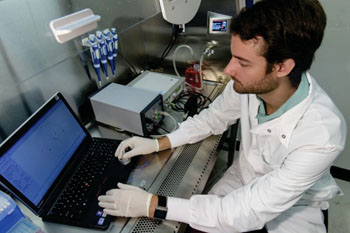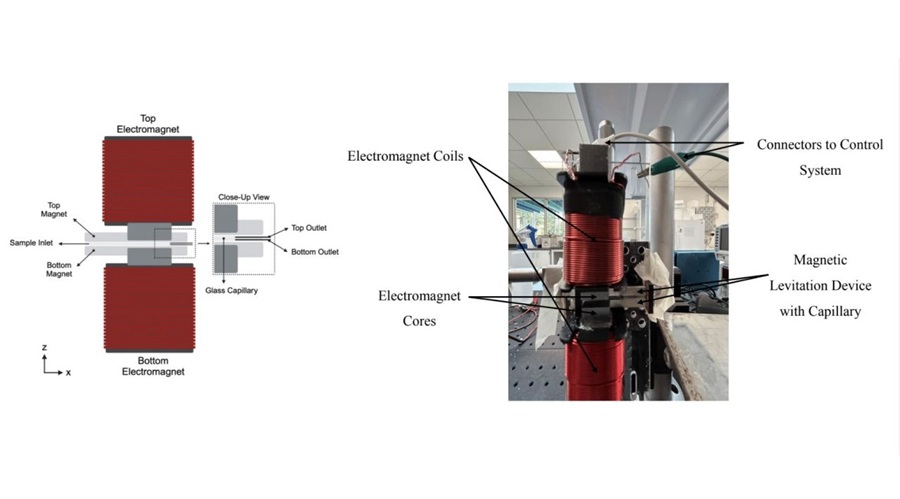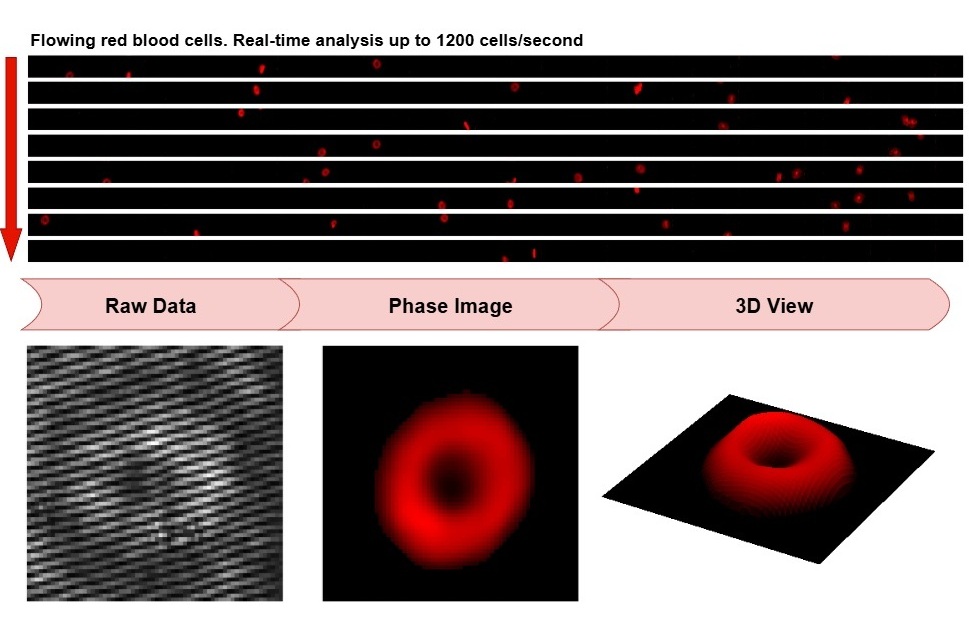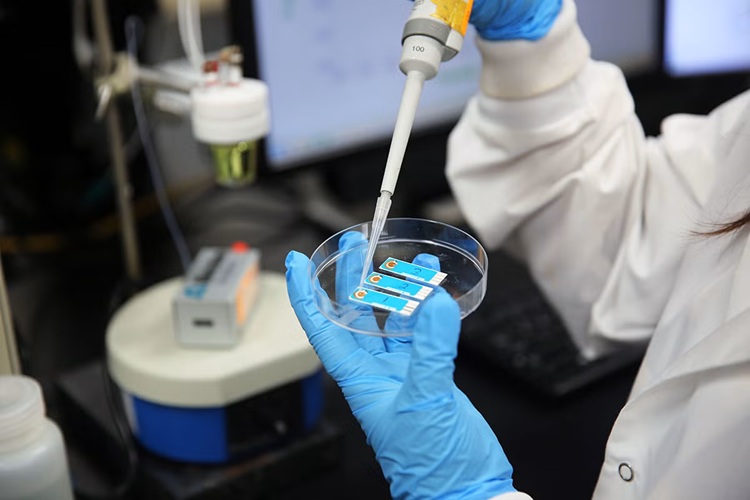Portable Device Could Test for Physical Property of Tumor Aggressiveness
By LabMedica International staff writers
Posted on 25 May 2015
A new polarimetric fiber stress sensor device has been developed for visco-elastic and biomimetic material analysis, and, as part of the emerging field of physical oncology, is being tested for measuring a tumor’s Young’s modulus—an elasticity-related measure recently linked to cancerous tumor aggressiveness.Posted on 25 May 2015
Engineers from the Viterbi School of Engineering at the University of Southern California (LA, CA, USA) developed the device and in preliminary testing found that more aggressive tumors are generally stiffer, a complex relationship that requires further study. The device itself is an important step in the challenge of developing non-destructive methods to characterize physical properties of biological materials, and will be suitable for a wide variety of applications. It is an all-fiber-based material analysis device based on optical polarimetry that is different from previous polarimetric systems which rely on free-space components.

Image: A user calibrates a newly developed portable polarimetric fiber stress sensor device while studying tumors by measuring Young’s modulus—an elasticity-related property recently linked to cancerous tumor aggressiveness (Photo courtesy of Kelvin Kuo, University of Southern California).
"The device leaves the sample completely undamaged, which allows researchers to still perform other tests on it," said Mark Harrison, USC engineering graduate student. Previous detectors required time-consuming alignment and were highly sensitive to environmental vibration. To solve these problems, the new device uses fiber optics, taking a cue from telecommunications. The system adds force onto a sample on top of the optical fiber, changing the polarization of the laser inside in a predictable way that enables calculation of the Young's modulus.
"Instruments able to measure a material's Young's modulus already existed, but they're large and require calibration each time they're moved," said Andrea Armani, USC associate professor of engineering, "Our device could be carried from hospital room to hospital room and doesn't need an engineer to operate it."
Prof. Armani was inspired after a conversation with colleague David Agus, USC professor of medicine and engineering, who told her that Young’s modulus has been linked to tumor aggressiveness but he lacked an easy-to-use device for testing that metric. "This advancement from Prof. Armani is so exciting, as we now have a new dimension of a tumor to measure. We are studying the role of Young's modulus together with Prof. Armani to help personalize and improve a cancer patient's care," said Prof. Agus.
In addition to evaluating the device's role in a clinical setting, there is also increased interest on a more fundamental level: understanding how different types of tumors are related to their mechanical properties. Emphasis has mostly been placed on the chemical makeup of tumors so most current tests to probe the nature of cancerous tumors focus on chemical makeup—an important feature to understand, but only part of whole the picture. "Physical oncology represents a completely fresh approach to tackling the problem of cancer. It has the potential to provide huge insights as scientists throughout the world try to understand, treat, and ultimately prevent cancer in humans," said Peter Kuhn, USC professor who helped launch a new peer-reviewed journal on physical oncology.
"Given how safe, stable, and accurate this instrument is, it could play a pivotal role in both diagnostic and research efforts," said Prof. Armani. The team next will work with Prof. Agus to test it in a clinical setting. They also hope to create a more sensitive version of the device that can map Young’s modulus across tumors.
The study, by Harrison MC and Armani AM, was published online May 14, 2015, in the journal Applied Physics Letters.
Related Links:
University of Southern California














